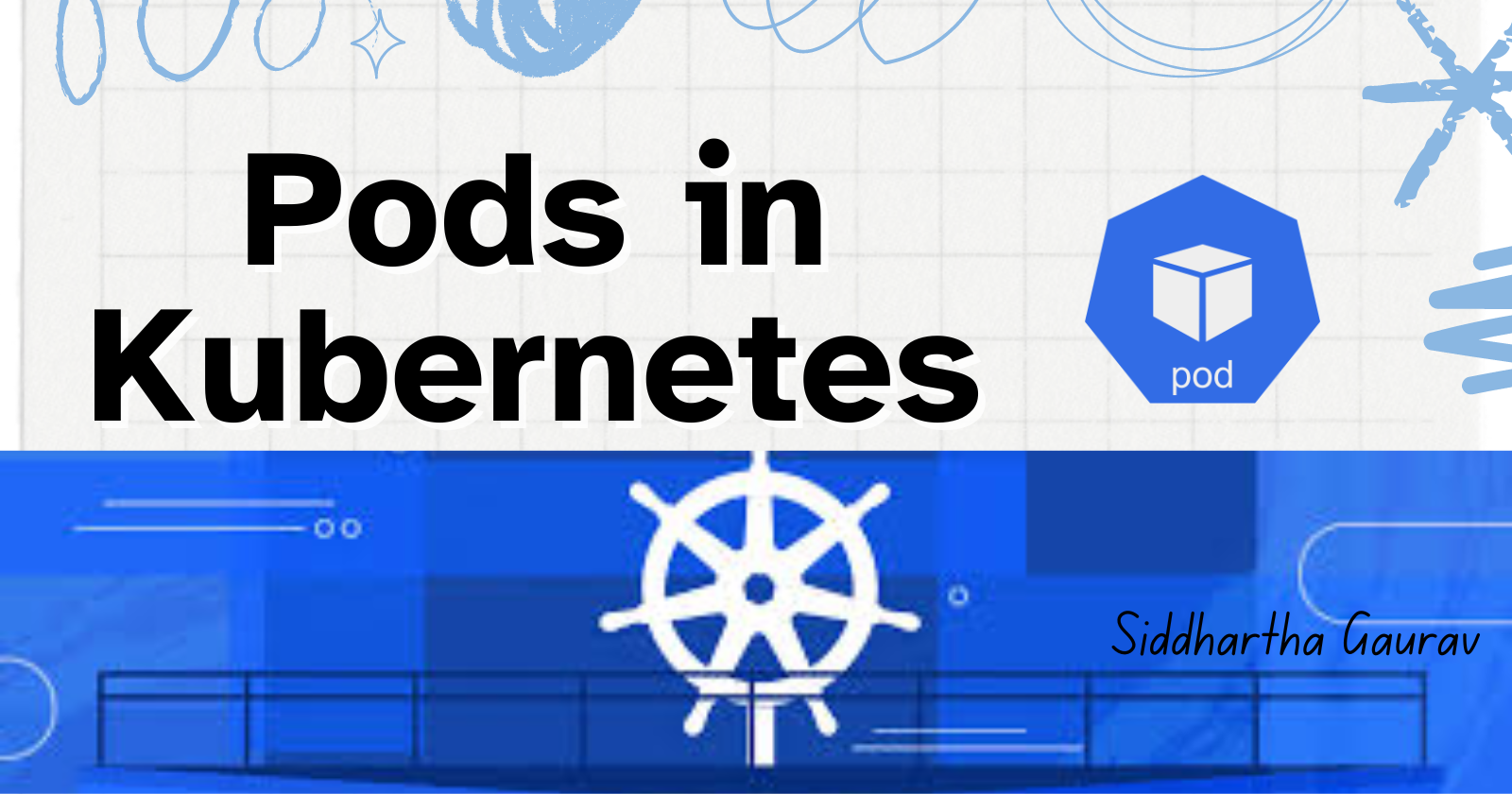Demystifying Pods in Kubernetes for Beginners
 Siddhartha Gaurav
Siddhartha Gaurav
If you've started your journey into the world of Kubernetes, you've probably heard the term "Pod" thrown around quite a bit. But what exactly is a Pod, and why is it such a fundamental concept in Kubernetes? Fear not, even if you're not a tech expert, we'll break it down in simple terms so you can grasp the concept with ease.
Understanding the Basics
Let's begin with the basics. Imagine Kubernetes as the conductor of a grand orchestra, coordinating various instruments (or containers) to play in harmony. Now, each musician needs a space to perform, right? Well, in Kubernetes, that space is called a Pod.
What is a Pod?
In simple terms, a Pod is the smallest deployable unit in Kubernetes. But here's where it gets interesting: a Pod can contain one or more containers. Think of it as a cozy apartment where roommates (containers) live together, sharing resources and collaborating on tasks.
Why Pods?
Now, you might wonder, "Why do we need Pods when we already have containers?" Excellent question! Pods provide a layer of abstraction around containers, offering several key benefits:
Grouping of Containers: Pods allow related containers to be grouped together, making it easier to manage and deploy them as a single unit.
Shared Resources: Containers within the same Pod share the same network namespace and can communicate with each other using localhost. They also share storage volumes, enabling data sharing between containers.
Scalability: Pods can be easily scaled up or down based on demand, ensuring optimal resource utilization and efficient orchestration of workloads.

Anatomy of a Pod
Now, let's take a closer look at what makes up a Pod:
Containers: These are the individual units of execution within a Pod. They encapsulate an application and its dependencies.
Pod IP Address: Each Pod is assigned a unique IP address, allowing other Pods to communicate with it over the network.
Shared Storage: Pods can mount shared storage volumes, enabling data sharing and persistence across containers.
Lifecycle: Pods have a defined lifecycle, including creation, execution, and termination. Kubernetes manages this lifecycle automatically, ensuring high availability and fault tolerance.
Use Cases
Pods are incredibly versatile and can be used for various purposes, including:
Microservices: Deploying multiple containers that make up a microservices architecture within a single Pod.
Sidecar Pattern: Enhancing the functionality of a primary container by attaching additional "sidecar" containers to the same Pod.
Batch Processing: Running parallel processing tasks within a Pod to efficiently handle batch workloads.
Conclusion
In conclusion, Pods are the building blocks of Kubernetes, providing a flexible and scalable environment for running containerized applications. By understanding the concept of Pods, you're one step closer to mastering the intricacies of Kubernetes orchestration.
So, the next time you hear someone mention Pods in the context of Kubernetes, you can confidently nod along, knowing that you've unlocked a fundamental piece of the puzzle!
Happy orchestrating!
Subscribe to my newsletter
Read articles from Siddhartha Gaurav directly inside your inbox. Subscribe to the newsletter, and don't miss out.
Written by

Siddhartha Gaurav
Siddhartha Gaurav
I'm a passionate DevOps engineer with a knack for streamlining development workflows and ensuring seamless deployment pipelines. With experience in managing cloud infrastructure, implementing DevOps best practices, and leveraging automation tools, I thrive on tackling complex challenges and driving efficiency in software delivery. Let's connect and explore how I can contribute to your projects!